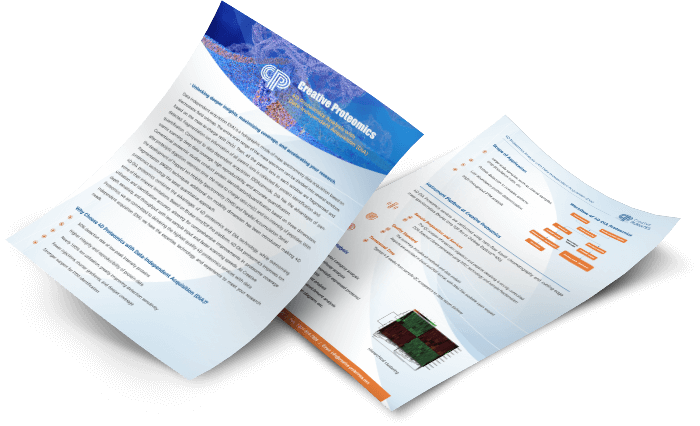Data Independent Acquisition (DIA) Data Analysis
In the realm of mass spectrometry-based proteomics, Data Independent Acquisition (DIA) has emerged as a powerful and comprehensive approach for the analysis of complex biological samples. DIA offers unique advantages in terms of data quality, reproducibility, and the depth of proteome coverage it can achieve.
Creative Proteomics provides comprehensive DIA data analysis services based on advanced quantitative techniques and instruments. Our DIA data analysis based on Spectrum-Centric strategy and Peptide-Centric strategy provides comprehensive and accurate data analysis services for proteomics.
Methods of DIA Data Acquisition
DIA Data Analysis Processes
- Spectral Library Generation. To extract meaningful information from DIA data, a spectral library is typically created. This library contains information about the fragment ions of known peptides. Libraries can be generated through data-dependent acquisition (DDA) experiments or in silico peptide databases. These libraries are crucial for accurate peptide and protein identification during data analysis.
- Precursor and Fragment Ion Extraction. The core of DIA data analysis involves extracting precursor and fragment ion intensities from the acquired data. This is typically achieved through software tools that match the observed spectra to the entries in the spectral library. The accurate determination of peak intensities is essential for quantification and identification.
- Peptide and Protein Quantification. Quantification in DIA relies on the accurate measurement of peak areas for the precursor and fragment ions. Various algorithms, such as MSstats and Skyline, have been developed to perform peptide and protein quantification with high accuracy and reproducibility. Isotopic labeling methods, like SILAC or TMT, can also be integrated for relative quantification.
- Data Post-processing and Validation. After quantification, data post-processing steps are crucial to ensure data quality. False discovery rate (FDR) estimation and statistical tests are applied to filter and validate the identified peptides and proteins. This step ensures the reliability of the results and minimizes false positives.
Applications of DIA Data Analysis
- Discovery of Biomarkers. Finding biomarkers has been shown to benefit greatly from DIA, particularly in clinical and translational research. Its great sensitivity and repeatability make it possible to find possible biomarkers in biological samples that are complicated, such tissues, blood, and urine. Novel biomarkers for a number of diseases, including cancer and neurological disorders, have been found because to research using DIA.
- Profiling of proteomes. A useful method for comprehensive proteome profiling is DIA. It is appropriate for characterizing complete proteomes since it can detect and measure a large number of proteins in a single experiment. By using DIA, scientists have been able to learn more about a variety of biological systems, including signaling pathways, cellular functions, and protein-protein interactions.
- Phenocoproteomics. In pharmacoproteomics, DIA is essential to medication development. It makes it easier to look into how drugs interact with their targets, clarifying how they work and any possible side effects. For the optimization and development of new drugs, this knowledge is priceless.
- Systems Biology. Systems biology benefits from DIA data analysis since it offers thorough information for biological system modeling. In order to create precise models of cellular functions that can be used for hypothesis testing and future study, DIA experiments provide quantifiable data.
Our Service Advantages

Creative Proteomics provides comprehensive DIA data analysis services. Our DIA data analysis services provide accurate and comprehensive data that help researchers greatly advance their understanding of complex biological systems and provide new solutions in the life sciences. If you are interested in us, please feel free to contact us.
* For Research Use Only. Not for use in the treatment or diagnosis of disease.



 4D Proteomics with Data-Independent Acquisition (DIA)
4D Proteomics with Data-Independent Acquisition (DIA)